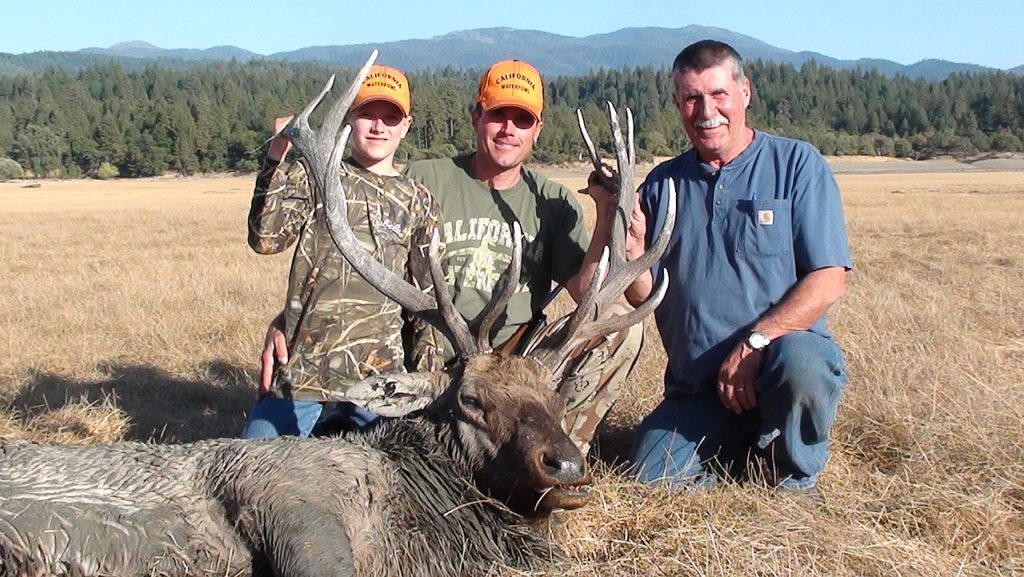
Please follow us on Truth Social, Telegram, Rumble, Minds, Gettr, Twitter, Gab
A disgruntled hunter wrote a Writers on the Range opinion recently about Westerners getting fed up with the many out-of-staters coming in and buying up draw licenses to shoot bull elk, deer, bear and other big game animals.
As a hunter myself, I understand their frustration.
But reducing non-resident tags, as Andrew Carpenter suggests, takes us in the wrong direction. The greatest threat to hunting now and in the future is the loss of habitat.
Private lands provide up to 80% of habitat for all wildlife species, including critical winter range that’s the limiting factor for most big game populations. Yet these family farms and ranches are struggling for economic survival and in many places are under immense development pressure.
According to the American Farmland Trust, Colorado is on track to lose approximately a half-million acres of open land in the next two decades. Other states have similarly alarming projections. As these lands disappear, so does the wildlife they support.
Income generated by providing access and outfitting services to out-of-state hunters is one of the few economic lifelines keeping ranches and habitat intact.
As New Mexico rancher Jack Diamond explained, “Without non-resident hunters, we couldn’t survive at this point in the ranching business. I don’t want to see this place subdivided, but we’d have to consider that as a last resort.”
David Olde, also a rancher from New Mexico, concurred: “We ended up with so many elk that we had to reduce our cattle. If I can’t sell hunts, what can I do—turn it into ranchettes?”
For the fourth-generation Bramwell family ranch in Colorado, hunting income is an integral part of their operation.
“Our out-of-state clients have been coming here to hunt for generations,” Darla Bramwell said. “These migratory animals do not care whose grass they are eating or whose fences they tear down as they come from forest lands to eat in our hay meadows at night. Without the income from the non-resident hunters, something would have to give.”

Most states already heavily favor resident hunters, both in draw quotas and license fees. In Colorado, for example, residents are now allocated 75% of licenses while non-residents receive only 25%. Further, non-residents typically pay hundreds of dollars more per license than residents. In Colorado a resident bull elk tag is $61. A non-resident bull elk tag costs $760.
Several things happen when non-resident licenses are further reduced. First, it squeezes the bottom line of family farms and ranches that support wildlife and depend on hunting for a portion of their income.
Second, it harms local livelihoods and rural economies. Visiting hunters outspend resident hunters by a large margin, supporting local restaurants, hotels, stores, outfitting services and the local tax base in rural communities.
As Bramwell said, “When our out-of-state hunters come here, they not only support our family but they support our community. They buy local gifts, food, fuel, lodging, meat processing and taxidermy work.”
Diamond’s operation supports between seven to 10 guides from August through December. “These are good-paying jobs and the money generated is all spent locally in the two counties we live in,” he said. “We buy gas, propane, groceries. We also pay state gross receipts tax on the entire hunt.”
Third, state wildlife agencies depend on the high license fees they charge out-of-state hunters.
Fourth, the loss of visiting hunters would remove incentives for prospective ranch buyers to invest in conserving and managing land for wildlife.
Finally, it would also mean more hunters crowding public lands and forcing elk to seek refuge on private lands, reducing hunter opportunity and creating a lower-quality hunt experience.
Pulling the economic rug out from under private lands and wildlife isn’t the answer. So, what is a better solution?
We need to increase, not decrease, incentives for landowners to conserve habitat and provide hunting opportunities. We should bolster, not undermine, the role of hunting in supporting agricultural lands and rural economies. And we need to improve wildlife habitat on public lands with better management of our forests and rangelands.
The future of hunting—and wildlife—both depend on landowners and sportsmen working together to sustain our remaining wild and working lands.
Author Lesli Allison is a contributor to Writers on the Range (https://writersontherange.org), an independent nonprofit dedicated to spurring conversation about the West.
